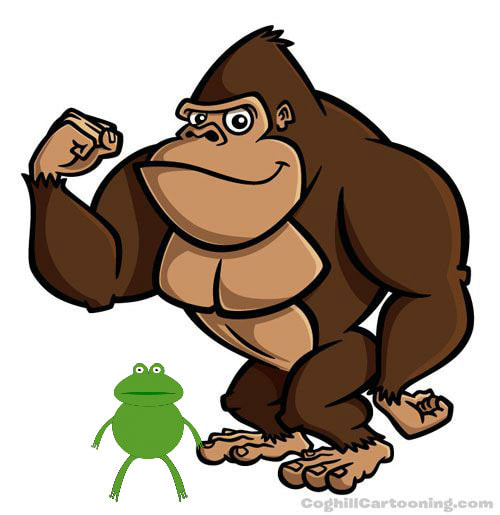Scientists have long believed that humans evolved from apes and once moved on "all fours" like a chimpanzee. But they've struggled over the how and when man's distant ancestors came to walk on two feet. But that may change with the discovery of a pelvis bone belonging to the Rudapithecus, a long-extinct relative of humans and modern apes. "New research on the fragmentary remains suggests that when the beagle-sized ape descended from the trees, she didn’t knuckle-walk like chimps or gorillas, as previously thought. Rather, she stood upright on two legs — much like a human." This discovery is a game-changer, say the experts and will, no doubt, result in textbooks needing to be rewritten.
The 10-million-year-old pelvis was unearthed in Rudabánya, a city in northern Hungary, in 2006. It’s the only known Rudapithecus pelvis, and one of only four reasonably complete ape pelvises more than 4 million years old. In 2009 Carol Ward, a noted expert on ape pelvis anatomy began working with other experts in the field on creating a detailed, 3-D model of a complete Rudapithecus pelvis. "They also created models of the skeletons of gorillas, macaques, orangutans, and other modern-day primates. By comparing the models, they were able to infer Rudapithecus’ anatomy — the curve of its spine, the position of its legs, the mechanics of its gait." The research shows that Rudapithecus looks quite different from modern apes, whose short, stiff lower backs support their substantial weight while climbing trees but also necessitate moving about on all fours when on the ground. Rudapithecus looked more like humans, whose long, flexible lower backs make it easy to stand upright. And if this is what human ancestors looked like, then transitioning to walking upright on two feet isn't such a big deal.
Rudapithecus lived during the Miocene, a moderately warm period that ended between 8 million and 5 million years ago. Earth grew cooler and drier during this epoch, causing forests to shrink and forcing tree-bound apes to venture across broad expanses of grassland. "If they were able to stand upright", ape-expert Ward said, "they might have fared better in the changing environment." But does the discovery of the Rudapithecus anatomy actually explain human evolution and how man moved from four legs to two? Science and researchers believe that more data is needed before making a conclusion.
"While Rudapithecus is obviously related to humans and modern apes, it’s unclear whether it is the direct ancestor of any living species. It’s possible that humans inherited upright posture from Rudapithecus or a closely related species, but it’s also possible that Rudapithecus died off without passing on this trait." Researchers need to fill in the gaps in the fossil record between Rudapithecus and modern apes and humans to find the answer.
Ape expert Carol Ward says, "Everybody has seen the drawing of the knuckle-walker that is slowly standing upright. That's what we always thought happened because all we had to look at was modern animals. But now, looking at the fossil record, we realize we have the wrong picture of what the ancestral animals would have been like. And this is a really big piece of the puzzle."
And I do not doubt that more research is already underway. Stay tuned...
That does it for me this week. I hope you've had fun, and maybe learned a few interesting facts, from these blogs. I'll be back again on Monday for another week of writing.
Please enjoy your weekend. Stay safe and I look forward to seeing you again on Monday.
PEACE.

 RSS Feed
RSS Feed